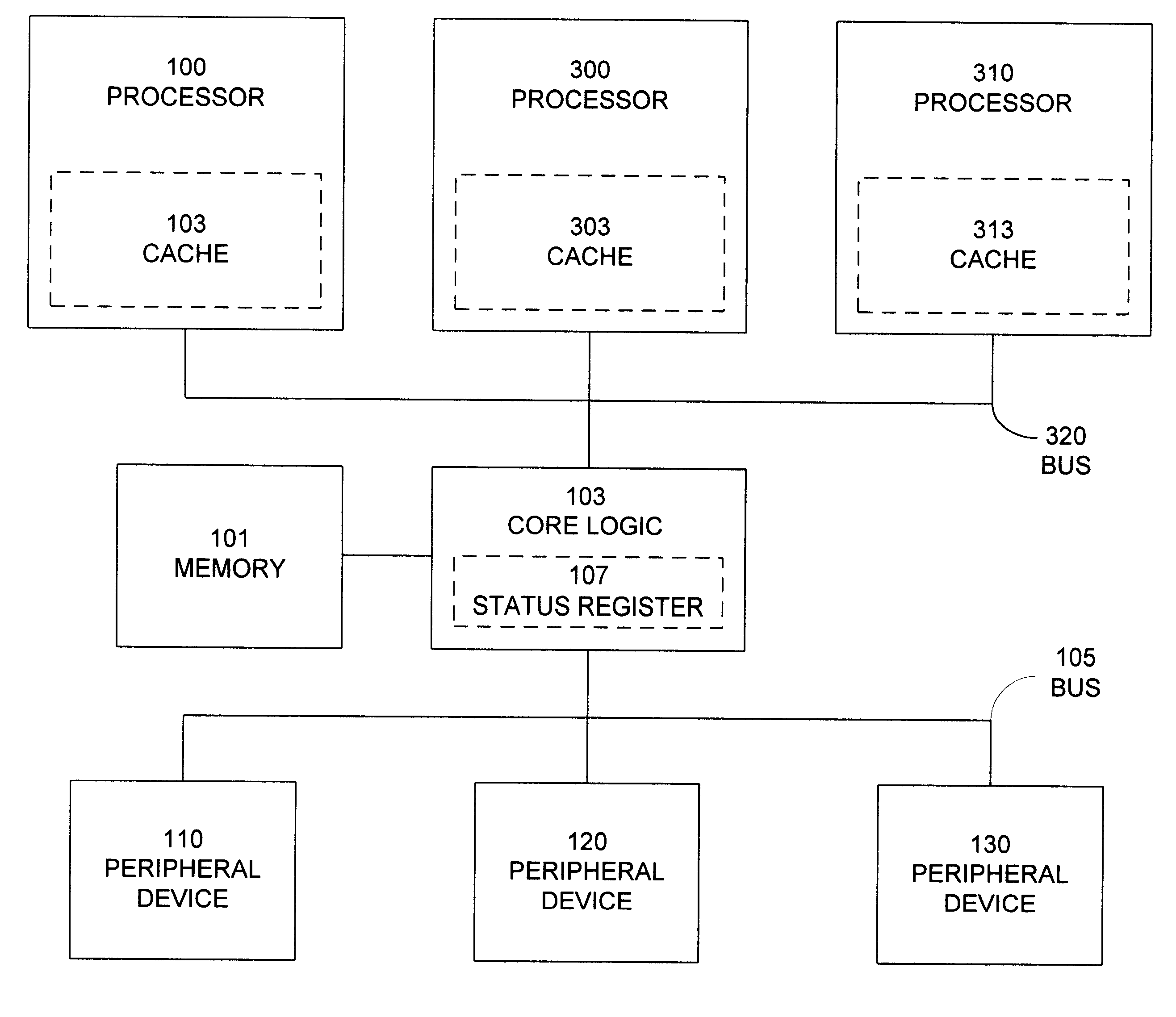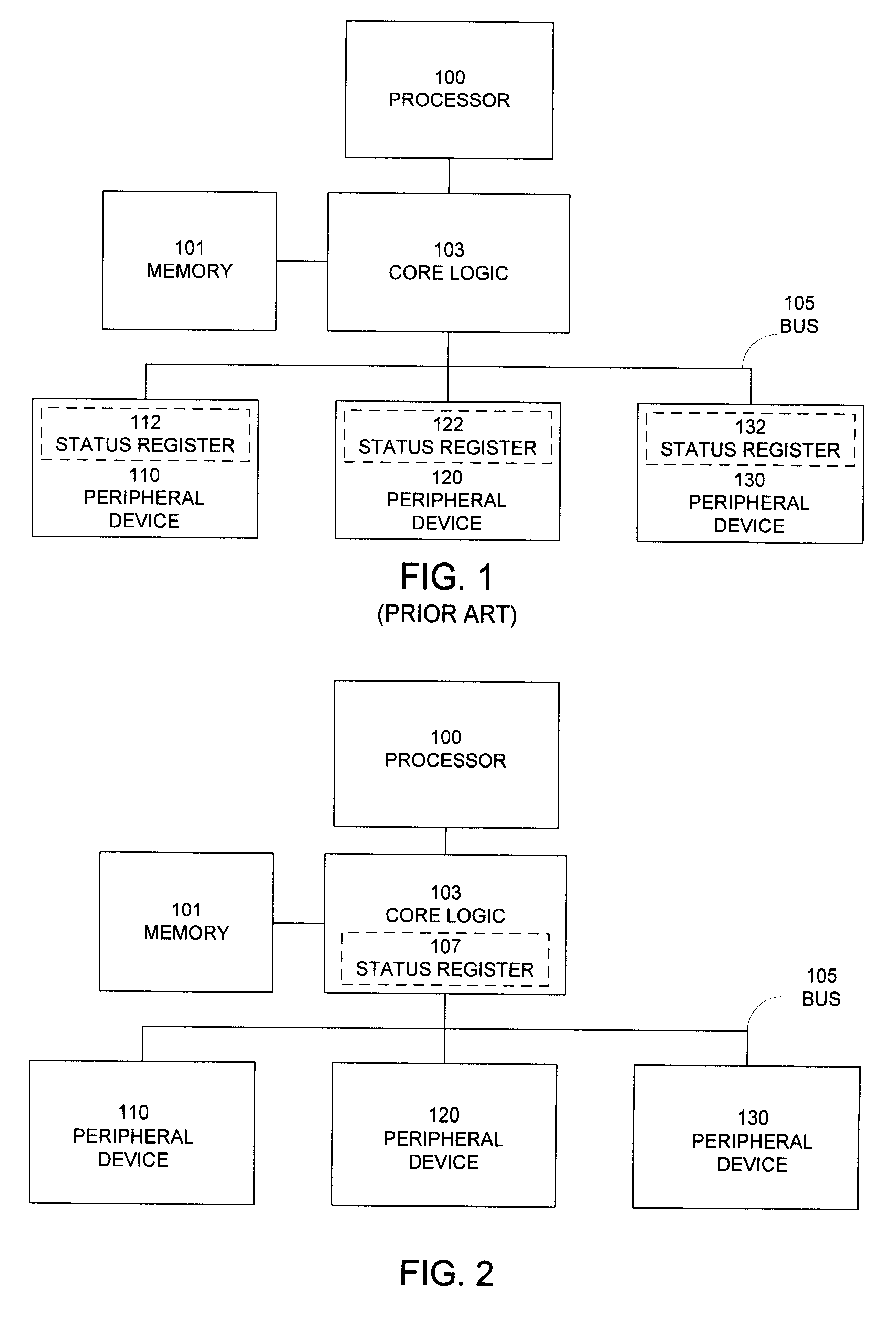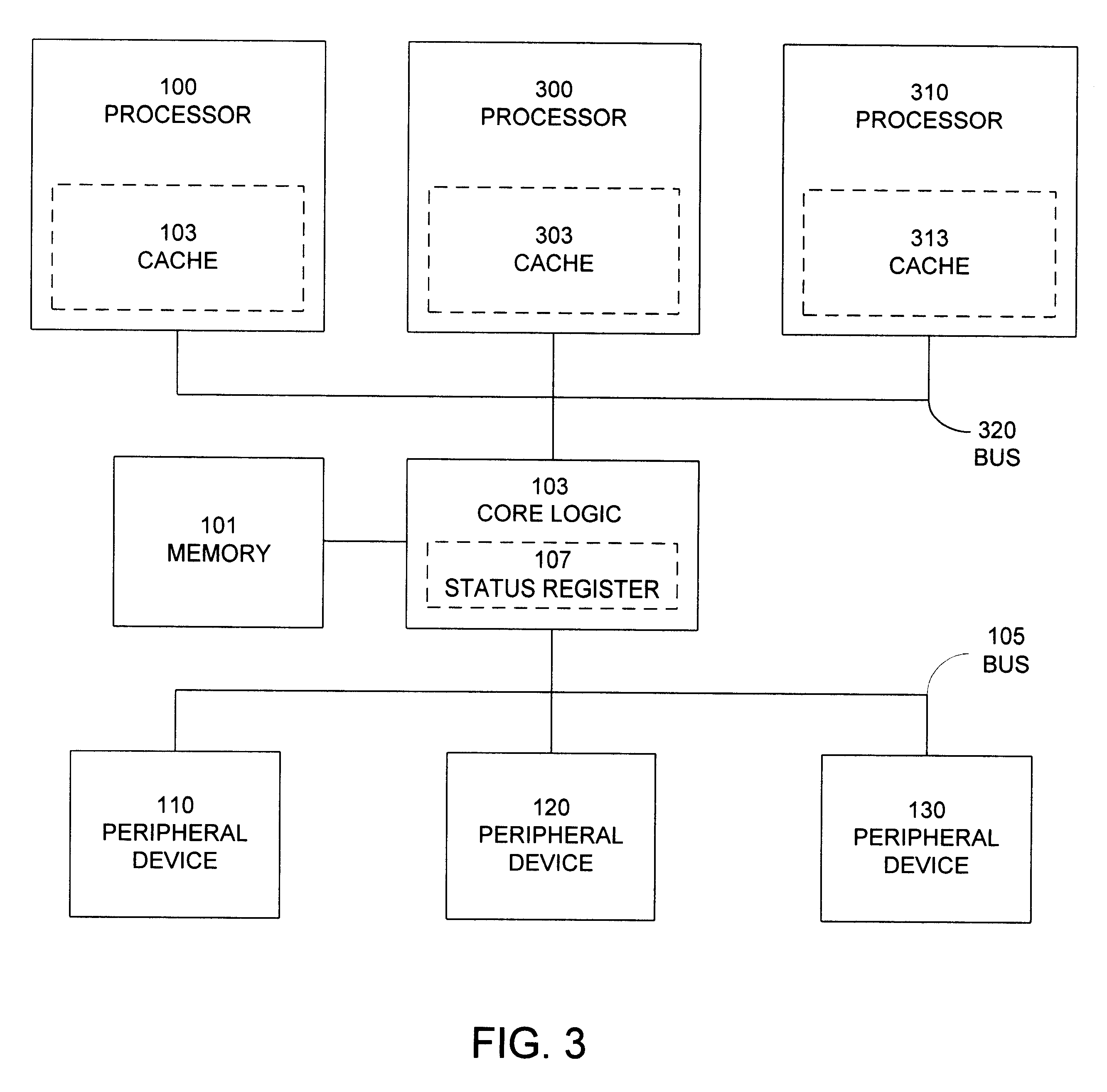Computer system including core logic unit with internal register for peripheral status
a computer system and register technology, applied in multi-programming arrangements, data conversion, instruments, etc., can solve the problems of large disadvantages of shared interrupt architecture, inability of central processing units to tell, and time-consuming polling process
- Summary
- Abstract
- Description
- Claims
- Application Information
AI Technical Summary
Benefits of technology
Problems solved by technology
Method used
Image
Examples
Embodiment Construction
FIG. 1 illustrates a prior art computer system, wherein a processor 100 reads status registers 112, 122 and 132, located at respective peripheral devices 110, 120 and 130. Processor 100 is coupled to memory 101 and bus 105 through core logic unit 103. Processor 100 can access peripheral devices 110, 120 and 130 through bus 105. In response to an interrupt, processor 100 polls status registers 112, 122 and 132 in order to determine which of peripheral devices 110, 120 and 130 require processing. This polling requires multiple operations over bus 105.
FIG. 2 illustrates a computer system including a processor 100 with a core logic unit 103 with an internal status register 107 for storing the status of peripheral devices in accordance with an embodiment of the present invention. As in the system illustrated in FIG. 1, processor 100 is coupled to memory 101 and bus 105 through core logic unit 103. Processor 100 can access peripheral devices 110, 120 and 130 through bus 105.
However, the e...
PUM
 Login to View More
Login to View More Abstract
Description
Claims
Application Information
 Login to View More
Login to View More - R&D
- Intellectual Property
- Life Sciences
- Materials
- Tech Scout
- Unparalleled Data Quality
- Higher Quality Content
- 60% Fewer Hallucinations
Browse by: Latest US Patents, China's latest patents, Technical Efficacy Thesaurus, Application Domain, Technology Topic, Popular Technical Reports.
© 2025 PatSnap. All rights reserved.Legal|Privacy policy|Modern Slavery Act Transparency Statement|Sitemap|About US| Contact US: help@patsnap.com



